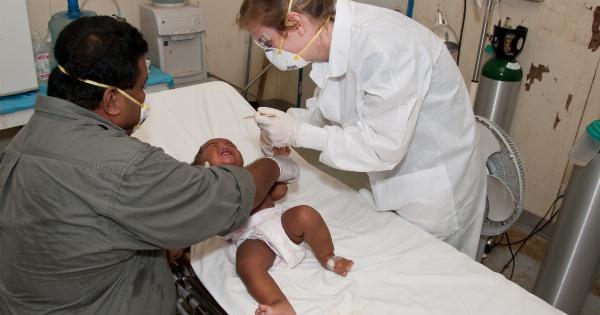Baby Dina: A Look at the Cause, Duration, and Treatment of Symptoms
Baby Dina is a fictional character who suffers from a range of symptoms that can cause distress to both the baby and her parents.
In this article, we will explore the possible causes of Baby Dina’s symptoms, how long they may last, and the available treatment options.
Cause of Symptoms
There are several potential causes for Baby Dina’s symptoms. It is essential to consult a medical professional for an accurate diagnosis. However, some common factors that may contribute to Baby Dina’s symptoms include:.
- Food allergies or intolerances
- Reflux or gastroesophageal reflux disease (GERD)
- Infections, such as a cold or flu
- Dental issues, such as teething
- Respiratory conditions, like asthma
- Environmental factors, such as exposure to allergens
Duration of Symptoms
The duration of Baby Dina’s symptoms can vary depending on the underlying cause. Some symptoms may be short-lived and resolve on their own, while others may persist for an extended period.
It is crucial to monitor the symptoms and consult with a healthcare professional for appropriate guidance. Generally, the duration of symptoms can range from a few days to several weeks.
Treatment Options
When it comes to treating Baby Dina’s symptoms, the approach will depend on the specific cause identified by a healthcare professional. Here are some common treatment options that may be considered:.
1. Dietary Changes
If food allergies or intolerances are suspected, a doctor may recommend modifying Baby Dina’s diet. This can involve eliminating certain foods or switching to specialized formulas for infants with allergies.
2. Medications
In some cases, medications may be prescribed to alleviate Baby Dina’s symptoms. For instance, if GERD is identified as the cause, a doctor may prescribe acid-suppressing medications or prokinetic agents to improve digestion and reduce reflux.
3. Symptom Relief
To address specific symptoms like fever or pain, over-the-counter medications formulated for infants may be recommended.
However, it is crucial to use these medications as directed and consult a healthcare professional if the symptoms worsen or persist.
4. Environmental Control
If environmental factors are suspected to trigger Baby Dina’s symptoms, measures such as keeping the living space clean, reducing exposure to potential allergens, or using air purifiers may be suggested.
5. Supportive Care
Providing Baby Dina with comfort and support is essential. This can include using gentle techniques like swaddling, rocking, or using a pacifier to soothe her. Additionally, maintaining a calm and nurturing environment can help manage her symptoms.
6. Consultation with Specialists
In certain situations, a healthcare professional may refer Baby Dina to a specialist for further evaluation and treatment. This could include a pediatric gastroenterologist, an allergist, or a pediatric pulmonologist.
Conclusion
Baby Dina’s symptoms can have various causes and durations. It is important to consult with a healthcare professional for accurate diagnosis and appropriate treatment.
By identifying the underlying cause, implementing the recommended treatment options, and providing supportive care, Baby Dina’s symptoms can be managed effectively, bringing relief to both her and her parents.






























